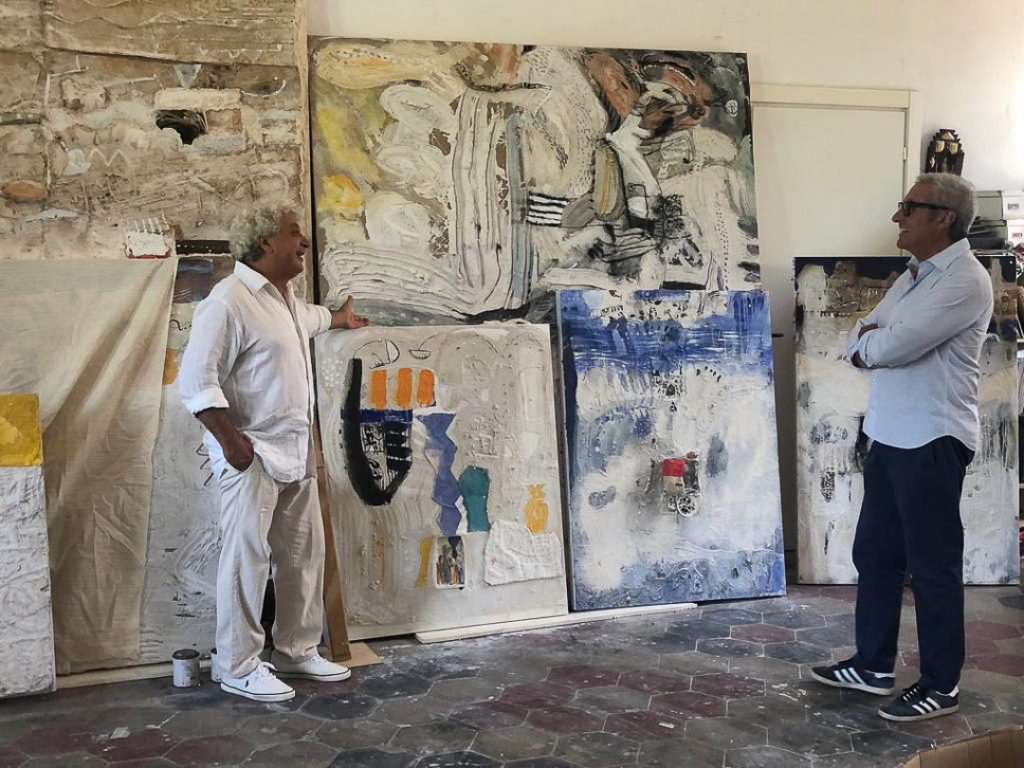Visiting Medhat Shafik’s studio

Visiting Medhat Shafik’s studio
4 July 2022 – Time to read: 1 minute
Chronicle of a day in June spent in Medhat Shafik’s studio in the Oltrepo Pavese district
Medhat Shafik was born in Egypt in 1956, but in 1976 he moved to Italy to study painting and scenography at the Brera Academy; since graduating, he has continued to live in Italy, working in a large studio in the Oltrepo Pavese area. Identified by New York’s Metropolitan Museum as one of the most interesting artists of the twentieth-century Arab world, Shafik combines the suggestions and colours of oriental art with the most advanced compositional techniques of the western avant-garde movements. Marcorossi artecontemporanea gallery has known and worked with Shafik since the beginning of his artistic career, hosting his first solo show in 1994 (when the gallery was still known as Spirale Arte). The artist’s partnership with the gallery really took off when the Egyptian Pavilion, represented by Shafik together with two other artists, was awarded the Golden Lion of Nations at the Venice Biennale in 1995, and his success and the gallery’s have been intertwined for almost thirty years.
The ever-new experience of viewing Medhat Shafik’s works
Going into artists’ studios is undoubtedly one of the greatest pleasures of our work, a source of nourishment for the eyes and the spirit. Going to Shafik’s studio in the Oltrepo Pavese district is particularly pleasant, not only because of the natural and artistic beauty of the place, but because of the artist’s generous hospitality, which he himself defines with a smile as “Arabian”. Cold water, juices and fruit accompany the frank and inspired dialogue that the artist, completely at ease in his own environment, among his own things and artworks, establishes with Marco Rossi. And so we see the works that the artist has created over the past few months, in which the lightness of white is accentuated by pigments and materials reclaimed from the experiences that compose them, in a collage that becomes a metaphor for layers of history. Shafik says, in a rather astonished tone, “you see, after so many years, I have once again started to add these little paper bowls, containers for pigments, seeds, and sand, but also little stories that are part of a whole, because everything evolves, but then everything returns ”. And so, stimulated by these memories, we begin to examine and talk about the great works of the artist’s career that make up an indissoluble part of the atmosphere of the studio.
Medhat Shafik and the specific weight of matter
These are large works, three metres by two metres, created over the years for public exhibitions in Verona, Spoleto, Palermo, Cairo, into which the artist poured all his poetic strength. In fact, Shafik has a particularly dense physical and material power of expression in larger formats, alternating with the more meditative, spiritual dimension typical of his smaller works. It is what he calls “the specific weight of matter”, in which the space of the work expands and his story becomes a part of the great journey of humanity. We focus on a large, recent work and our minds begin to wander, lulled by the artist’s words, gliding in flight over lost and deserted cities, travelling in time and space to far-off lands and remote islands. Then we land again, somewhat reluctantly, in the reality of the studio, as our work calls us back to Milan, and we choose the artworks that will soon come to the Marcorossi artecontemporanea galleries before setting off back to the city, laden down with fruit we have picked from the trees in the artist’s garden.